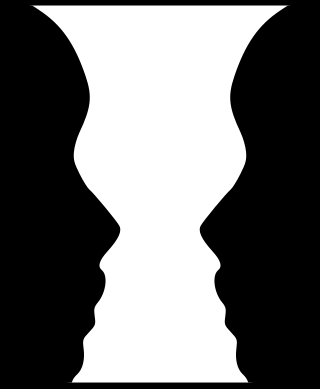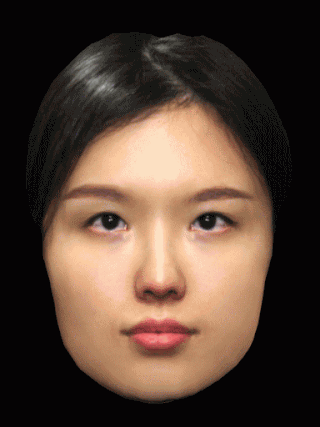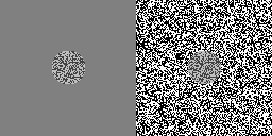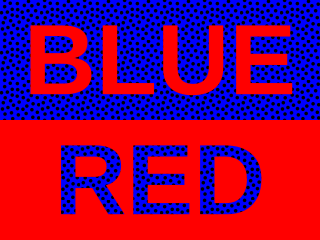An illusion is a distortion of the senses, which can reveal how the mind normally organizes and interprets sensory stimulation. Although illusions distort the human perception of reality, they are generally shared by most people.

In visual perception, an optical illusion is an illusion caused by the visual system and characterized by a visual percept that arguably appears to differ from reality. Illusions come in a wide variety; their categorization is difficult because the underlying cause is often not clear but a classification proposed by Richard Gregory is useful as an orientation. According to that, there are three main classes: physical, physiological, and cognitive illusions, and in each class there are four kinds: Ambiguities, distortions, paradoxes, and fictions. A classical example for a physical distortion would be the apparent bending of a stick half immerged in water; an example for a physiological paradox is the motion aftereffect. An example for a physiological fiction is an afterimage. Three typical cognitive distortions are the Ponzo, Poggendorff, and Müller-Lyer illusion. Physical illusions are caused by the physical environment, e.g. by the optical properties of water. Physiological illusions arise in the eye or the visual pathway, e.g. from the effects of excessive stimulation of a specific receptor type. Cognitive visual illusions are the result of unconscious inferences and are perhaps those most widely known.

The Necker cube is an optical illusion that was first published as a rhomboid in 1832 by Swiss crystallographer Louis Albert Necker. It is a simple wire-frame, two dimensional drawing of a cube with no visual cues as to its orientation, so it can be interpreted to have either the lower-left or the upper-right square as its front side.

Depth perception is the ability to perceive distance to objects in the world using the visual system and visual perception. It is a major factor in perceiving the world in three dimensions. Depth perception happens primarily due to stereopsis and accommodation of the eye.

The McGurk effect is a perceptual phenomenon that demonstrates an interaction between hearing and vision in speech perception. The illusion occurs when the auditory component of one sound is paired with the visual component of another sound, leading to the perception of a third sound. The visual information a person gets from seeing a person speak changes the way they hear the sound. If a person is getting poor-quality auditory information but good-quality visual information, they may be more likely to experience the McGurk effect. Integration abilities for audio and visual information may also influence whether a person will experience the effect. People who are better at sensory integration have been shown to be more susceptible to the effect. Many people are affected differently by the McGurk effect based on many factors, including brain damage and other disorders.

Binocular rivalry is a phenomenon of visual perception in which perception alternates between different images presented to each eye.

Figure–ground organization is a type of perceptual grouping that is a vital necessity for recognizing objects through vision. In Gestalt psychology it is known as identifying a figure from the background. For example, black words on a printed paper are seen as the "figure", and the white sheet as the "background".

Monocular rivalry is a phenomenon of human visual perception that occurs when two different images are optically superimposed. During prolonged viewing, one image becomes clearer than the other for a few moments, then the other image becomes clearer than the first for a few moments. These alternations in clarity continue at random for as long as one looks. Occasionally one image will become exclusively visible and the other image invisible.

Ambiguous images or reversible figures are visual forms that create ambiguity by exploiting graphical similarities and other properties of visual system interpretation between two or more distinct image forms. These are famous for inducing the phenomenon of multistable perception. Multistable perception is the occurrence of an image being able to provide multiple, although stable, perceptions.
Stereopsis is the component of depth perception retrieved through binocular vision. Stereopsis is not the only contributor to depth perception, but it is a major one. Binocular vision happens because each eye receives a different image because they are in slightly different positions on one's head. These positional differences are referred to as "horizontal disparities" or, more generally, "binocular disparities". Disparities are processed in the visual cortex of the brain to yield depth perception. While binocular disparities are naturally present when viewing a real three-dimensional scene with two eyes, they can also be simulated by artificially presenting two different images separately to each eye using a method called stereoscopy. The perception of depth in such cases is also referred to as "stereoscopic depth".

The Hollow-Face illusion is an optical illusion in which the perception of a concave mask of a face appears as a normal convex face.

The Chubb illusion is an optical illusion or error in visual perception in which the apparent contrast of an object varies substantially to most viewers depending on its relative contrast to the field on which it is displayed. These visual illusions are of particular interest to researchers because they may provide valuable insights in regard to the workings of human visual systems.
Flash suppression is a phenomenon of visual perception in which an image presented to one eye is suppressed by a flash of another image presented to the other eye.
John Douglas "Jack" Pettigrew was an Australian neuroscientist. He was Emeritus Professor of Physiology and Director of the Vision, Touch and Hearing Research Centre at the University of Queensland in Australia.

Motion Induced Blindness (MIB), also known as Bonneh's illusion is a visual illusion in which a large, continuously moving pattern erases from perception some small, continuously presented, stationary dots when one looks steadily at the center of the display. It was discovered by Bonneh, Cooperman, and Sagi (2001), who used a swarm of blue dots moving on a virtual sphere as the larger pattern and three small yellow dots as the smaller pattern. They found that after about 10 seconds, one or more of the dots disappeared for brief, random times.

Chromostereopsis is a visual illusion whereby the impression of depth is conveyed in two-dimensional color images, usually of red–blue or red–green colors, but can also be perceived with red–grey or blue–grey images. Such illusions have been reported for over a century and have generally been attributed to some form of chromatic aberration.
Multistable auditory perception is a cognitive phenomenon in which certain auditory stimuli can be perceived in multiple ways. While multistable perception has been most commonly studied in the visual domain, it also has been observed in the auditory and olfactory modalities. In the olfactory domain, different scents are piped to the two nostrils, while in the auditory domain, researchers often examine the effects of binaural sequences of pure tones. Generally speaking, multistable perception has three main characteristics: exclusivity, implying that the multiple perceptions cannot simultaneously occur; randomness, indicating that the duration of perceptual phases follows a random law, and inevitability, meaning that subjects are unable to completely block out one percept indefinitely.
Binocular rivalry is a visual phenomenon wherein one experiences alternating perceptions due to the occurrence of different stimuli presented to the corresponding retinal regions of the two eyes and their competition for perceptual dominance.
Interindividual differences in perception describes the effect that differences in brain structure or factors such as culture, upbringing and environment have on the perception of humans. Interindividual variability is usually regarded as a source of noise for research. However, in recent years, it has become an interesting source to study sensory mechanisms and understand human behavior. With the help of modern neuroimaging methods such as fMRI and EEG, individual differences in perception could be related to the underlying brain mechanisms. This has helped to explain differences in behavior and cognition across the population. Common methods include studying the perception of illusions, as they can effectively demonstrate how different aspects such as culture, genetics and the environment can influence human behavior.












